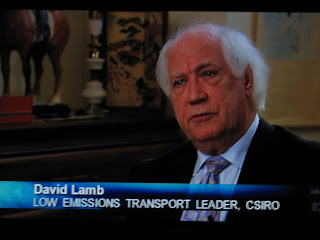 Kevin Rudd’s Nagoya visit may be big news here (see 5 photos from today’s two Sydney broadsheets, below), but in Tokyo it’s no biggie.
Kevin Rudd’s Nagoya visit may be big news here (see 5 photos from today’s two Sydney broadsheets, below), but in Tokyo it’s no biggie. Mainichi Daily News (my Japan broadsheet website of choice) shows nothing about the trip on its front page.
The only mention is below the fold in ‘business’. It's a story that includes the Altona upgrade (10,000 annually) as part of a global move to offshore production of hybrids, which will also be manufactured in Thailand (9000 annually).
The main point is buried down the bottom of the Mainichi story, where we learn that Altona has an “annual production capacity of 150,000 vehicles, and made 149,000 vehicles last year”.
No mention of Rudd in The Yomiuri Shimbun or The Japan Times.
Last time I got my Aurion serviced I asked - as I always do - the sales manager about Toyota’s business. It’s fascinating to read today’s journalism because they miss the point entirely. Or they pretend to.
Only Matthew Warren, in his feature on page 11 of The Australian, points to the salient fact. It's the single most important fact but it’s at the bottom of the column.
Toyota has been making cars in Thailand for decades. But what no Australian is told - unless he or she asks their local sales manager - is that practically all taxis in the Middle East are Australian-made Camrys.
Kim Carr made a related point - against a spray of negative stories from media outlets keen to hang a sign around the government’s neck. Toyota is - and the CSIRO’s David Lamb (pictured) underscored this when interviewed by the ABC - a world-class manufacturer.
Last year it overtook GM as global No 1. In 1997, when it brought the Prius to market, nobody saw potential. Japanese foresight means Toyota is set to expand exponentially while US rivals close manufacturing plants at home.
With Lexus Toyota's domestic plants can produce high-end vehicles while it offshores older, less expensive technologies in places like Australia and Thailand.
Carr pointed out that having Toyota here causes positive outcomes to proliferate in ways that would not be possible otherwise.
Skills developed working at Toyota‘s Altona plant, for example, would be easily transferable to other automakers and to other industries.
Apparently Rudd was asked about food security during a talk at Kyoto University. Similar topics emerged at today’s meet at the Tokyo Press Club, says SBS's Karen Middleton on the ground.
Photos, below, of Rudd hitting the supermarket aisles tell the real story. Imagine the president of Vietnam in Sydney to promote factory subsidies.
The Sydney Morning Herald went further than its rival in pointing to the war mentioning - in its page 4 story (Rudd doling out beef cubes to a three-year-old as minders watch) - Hodogaya Commonwealth War Cemetery.
If Rudd and his wife Therese Rein were in Nagoya - in cars, fuelling cars, looking at hybrid powerplants under bonnets - and also in Yokohama, they’re busy.
Hodogaya is on the outskirts of Yokohama, west of the capital. Yokohama was fingered to billet foreign troops post-WWII just as an island off Nagasaki was home to Dutch traders during the previous century.






No comments:
Post a Comment